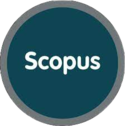The Impact of Video - Making Activities on Student’s Grammar Mastery
DOI:
https://doi.org/10.18592/tarbiyah.v6i1.1301Abstract
The teaching of grammar is frequently uninteresting so most of students are reluctant to learn this subject. Inviting them to learn the grammar by incorporating the use of technology may become a new way to attract their attention. In the present research, the writer conducted a research to compare the impact of grammar instructions on two classes, which used two different techniques to teach grammar: conventional method and video-making activities (VMA). There were 51 students of English Department at State Institute for Islamic Studies who participated in the research. The data were collected by using a test to measure their grammar mastery and a questionnaire to understand their respond toward the method. The resultshowed that the students who were taught by using the VMA had no better grammar mastery compared to those who were taught using the conventional method. However, the result of questionnaire yielded that most of the students agreed that the VMA was fun and interesting. This activity, according to them, also promoted creativity and technology literacy.References
Brown, H.D. (2007). Teaching by Principles. New York: Pearson Education.
Covill, C. & Jean, H. (2011). Learning styles. In: Supporting Learning in Practice SLIPConference, 13th April 2011, University of Huddersfield.
Craswell, J.W. (2012). Education Research: Palnning, Conducting, Evaluating Quantitative and Qualitative Research 4thEdn. White Plains: Longman.
Greenberg, D. & Zanetis, J. (2012). The Impact of Broadcast and Streaming Video in Education. California: Weinhouse Research.
Erdem, I & Celik, M. (2011). Evaluation on Grmmar Teaching Methods. International Periodical for the Languages, Literature, and History of Turkish or Turkic. Vol 6 (1), pp. 1030-1040.
Hani, N.A. B. (2014). The Effect of Using Computer in Teaching English Grammar to JordanianUniversity Students: The Passive Voice a Model. Journal of Educational & Psychological Sciences, Vol. 15 (4), pp.659-680.
Harmer, J. (2001).The Practice of English Language Teaching.England: Pearson Education Limited.
Ilin, G., Kutlu, O., & Kutluay, A. (2013). An Action Research: Using Video for Teaching Grammar in an ESP Class. Procedia: Social and Behavioral Sciences, Vol. 70, pp. 272-281.
Kara, Z.E. & Aksel, A.S. (2013). The Effectiveness of Music in Grammar Teaching on Motivation and Success of the Students’ at Preparatory School at Uludag University. Procedia: Sosial and Behavioral Sciences. Vol 106. Pp. 2739-2745.
Khansir A.A & Deghhani, N. (2015). “The Impact of Extensive Reading on Grammatical Mastery of Iranian EFL Learners. Theory and Practice in Language Studies, Vol. 5 (7). Pp. 1501-1507.
Latief, M.A. (2012). Research Methods on Language Learning An Introduction. Malang: UM Press.
Lodico, M., Spaulding, D. & Voegtle, K. (2010). Methods in Educational Research: From Theory to Practice, 2nd Edition. San Francisco: Jossey-Bass
McMillan, J. H. (1992). Educational Research: Fundamentals for the Consumers. New York: Harper Collins Publisher.
Mohammed, R.F. (2013). The Effectiveness of Using Subtitled Video to Teach Grammar. Graduate Thesis. Iowa: Iowa State University.
Downloads
Published
How to Cite
Issue
Section
License
Authors retain copyright and grant the journal right of first publication with the work simultaneously licensed under a Creative Commons Attribution 4.0 International License that allows others to share the work with an acknowledgment of the work's authorship and initial publication in this journal.




